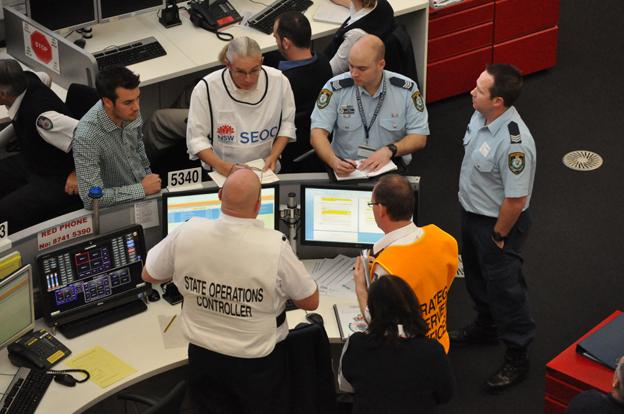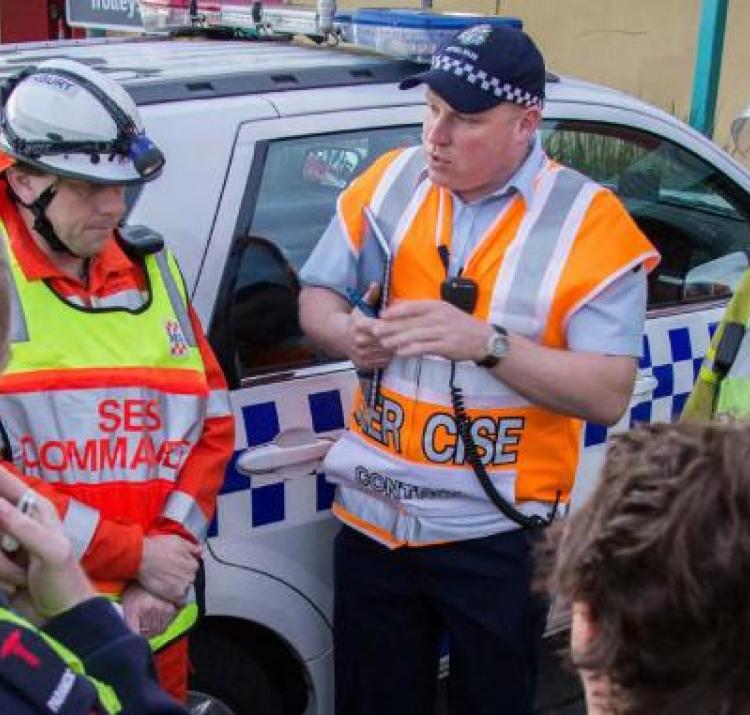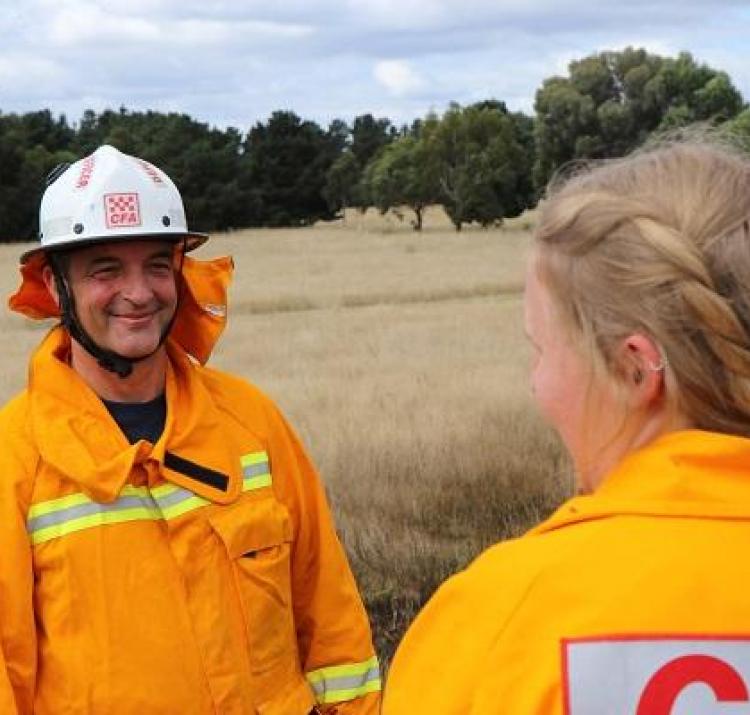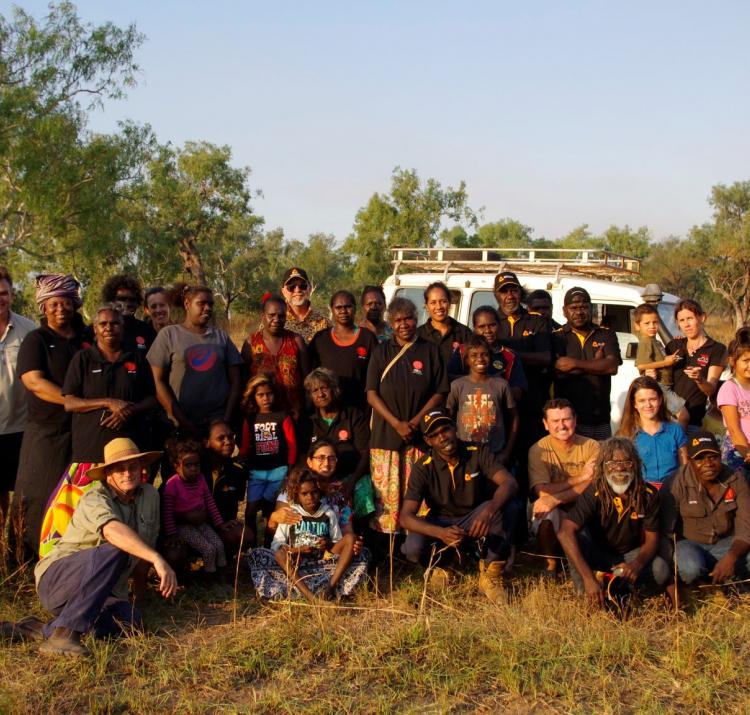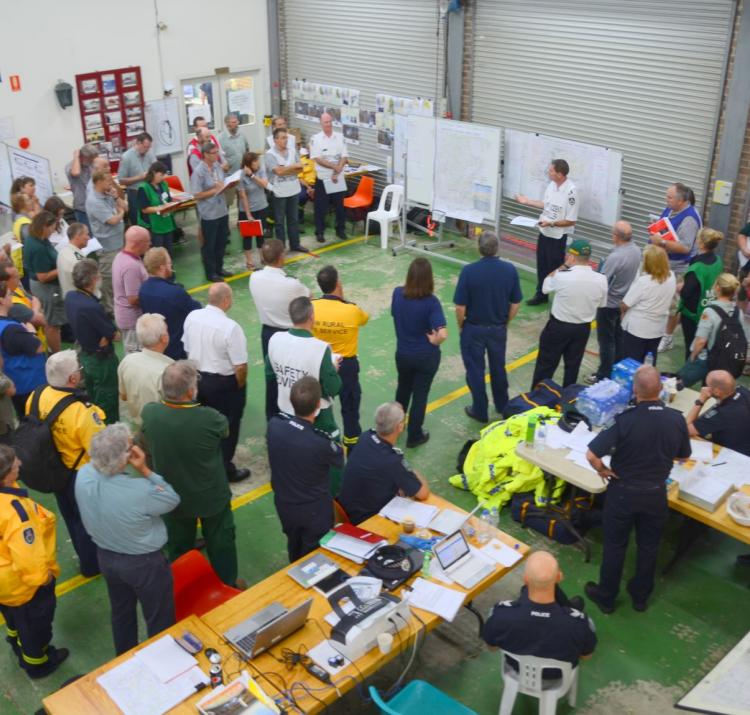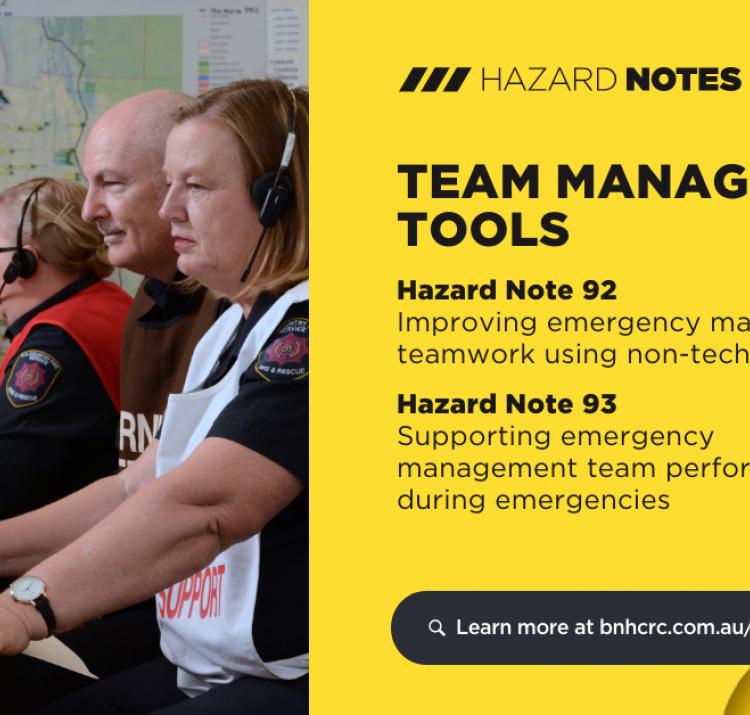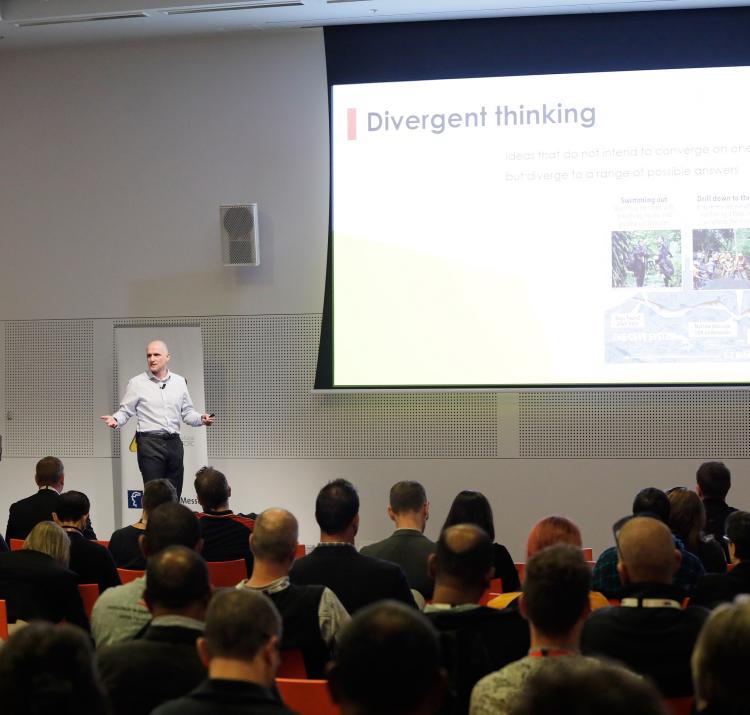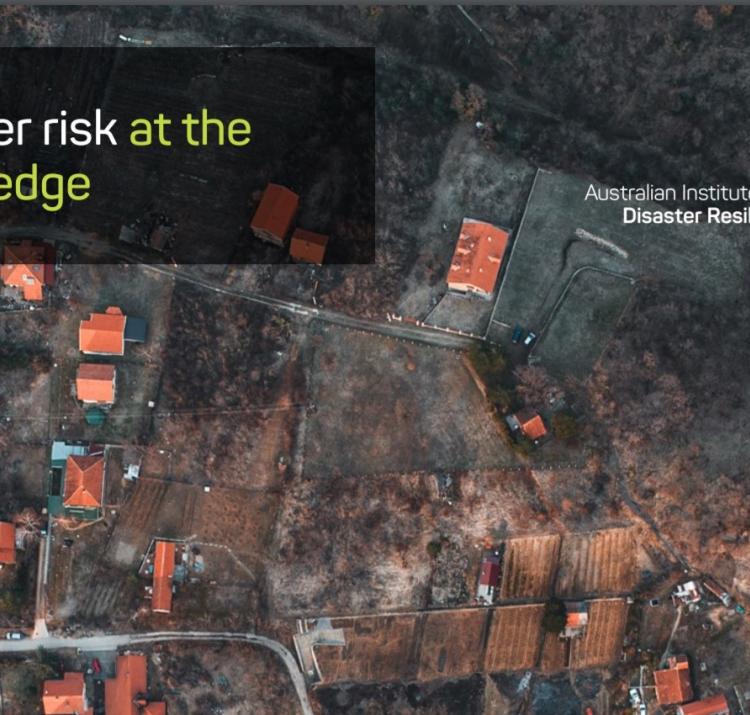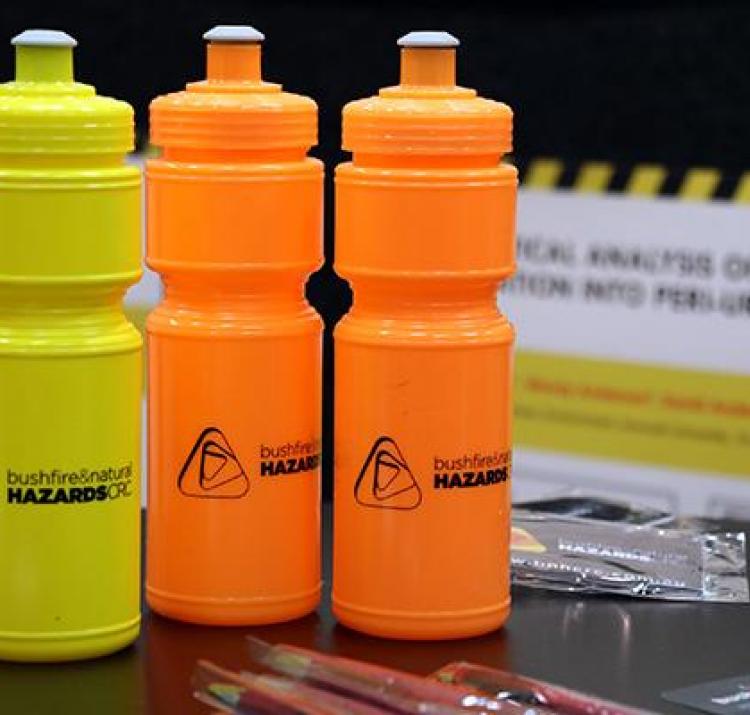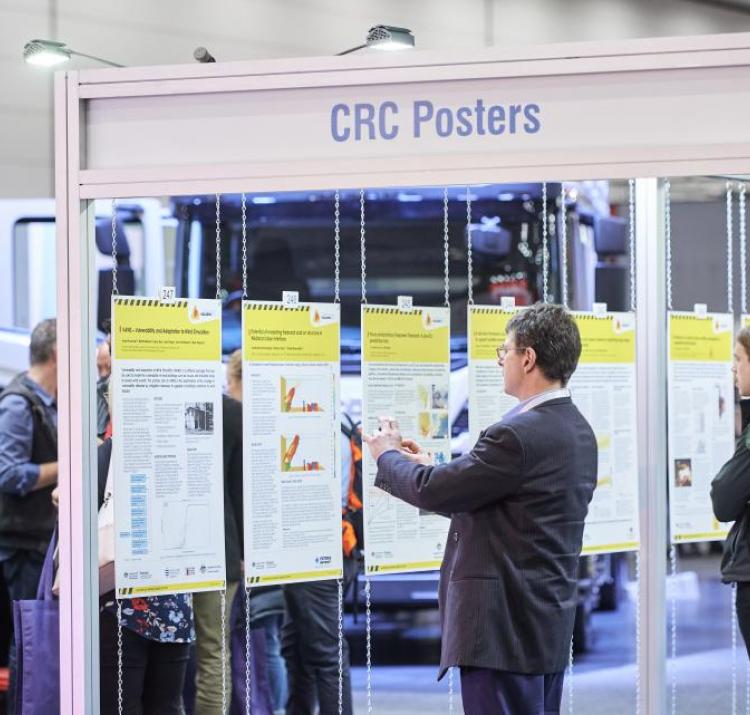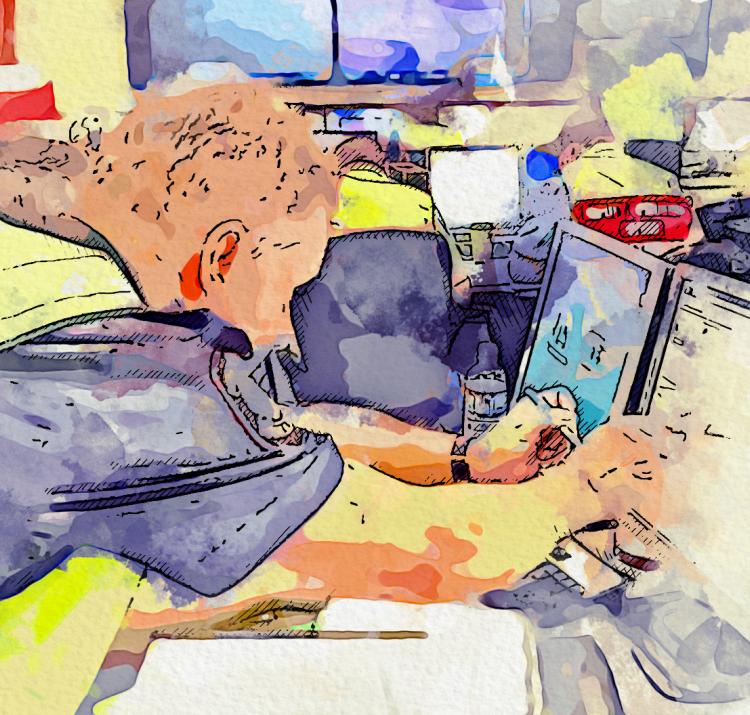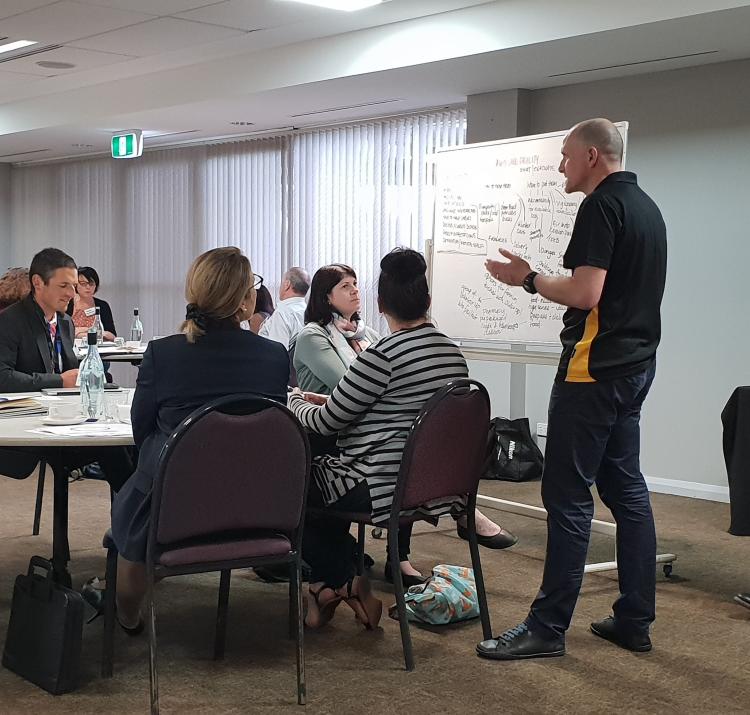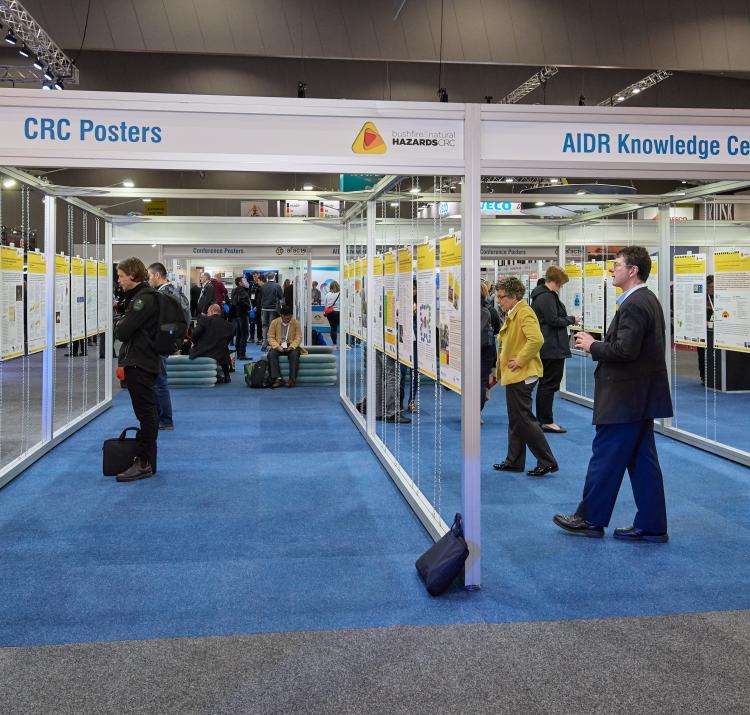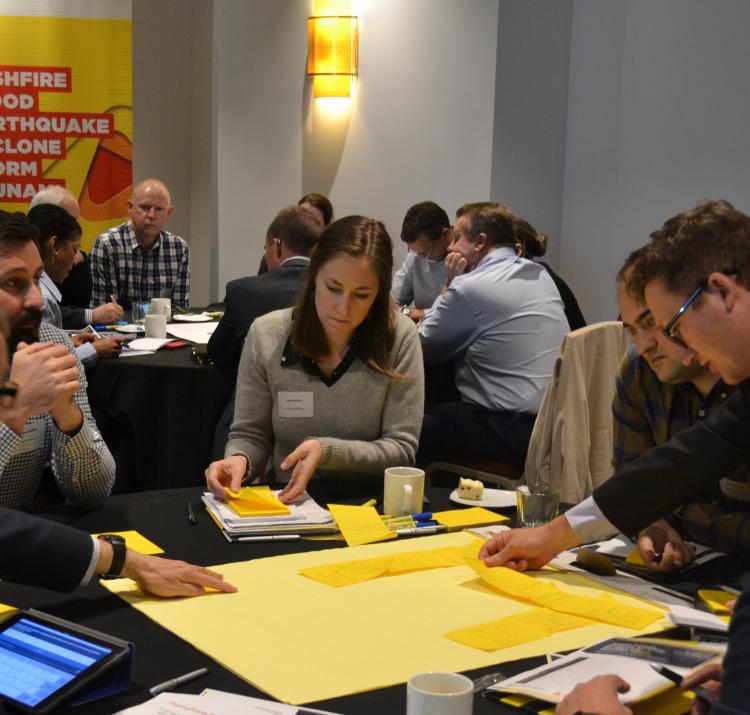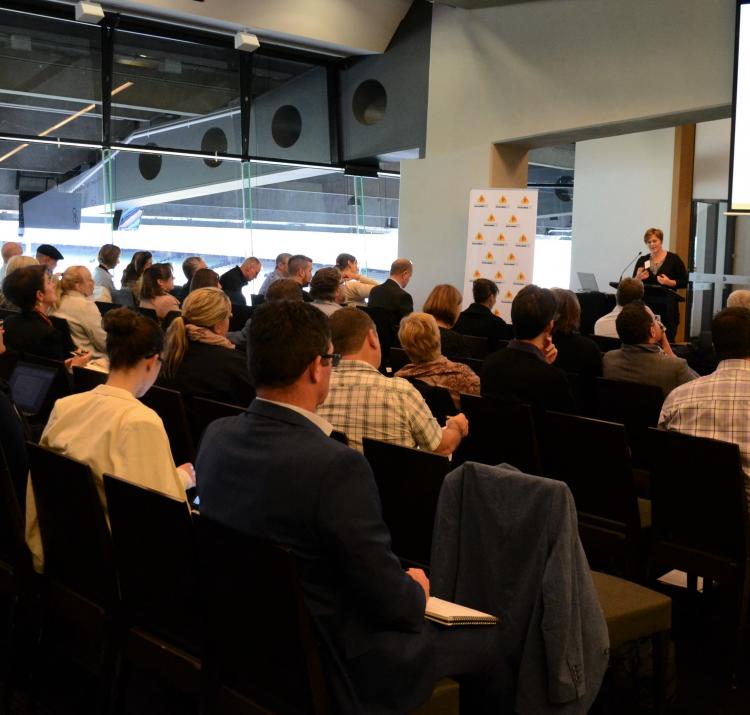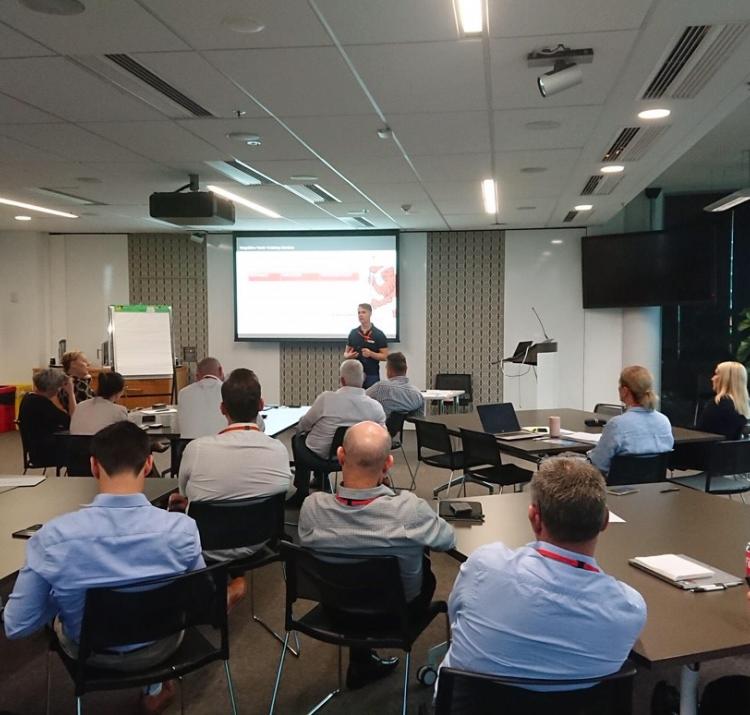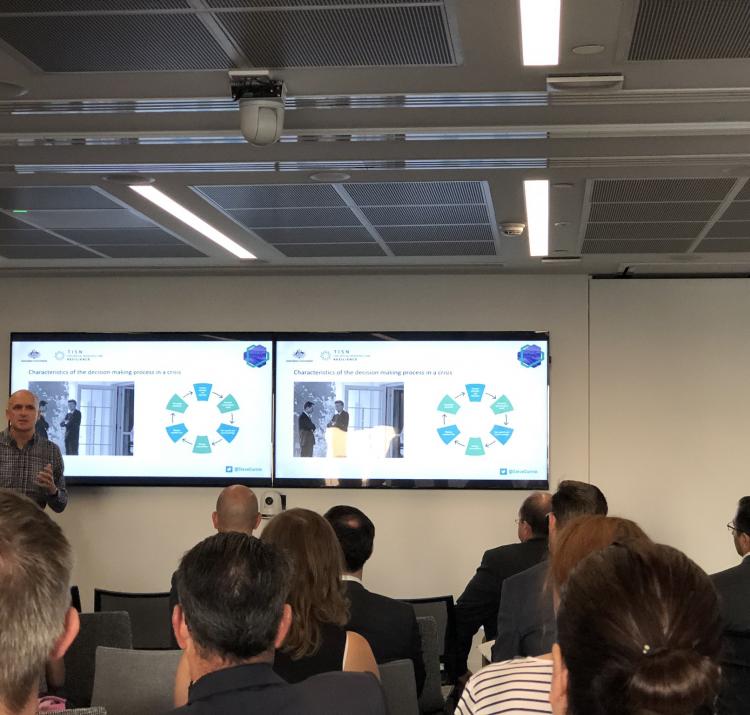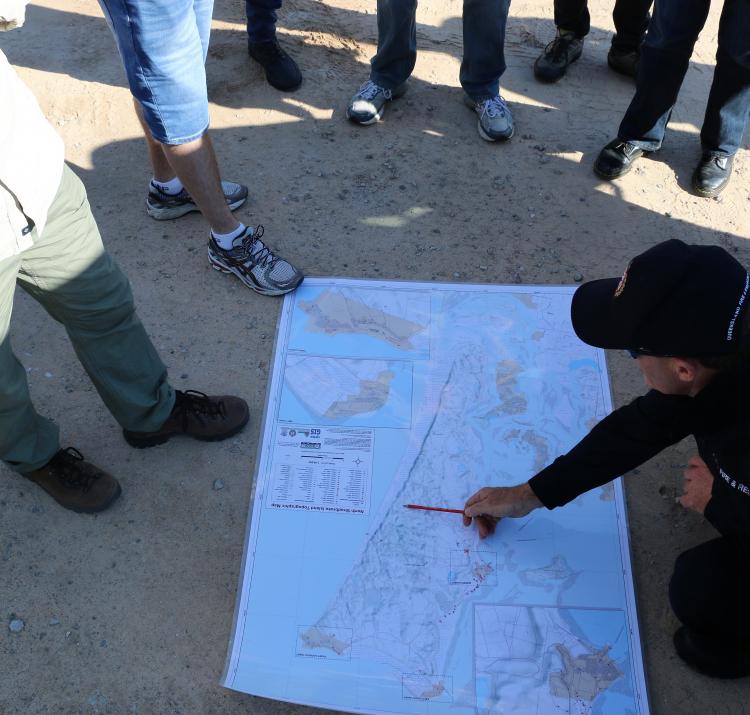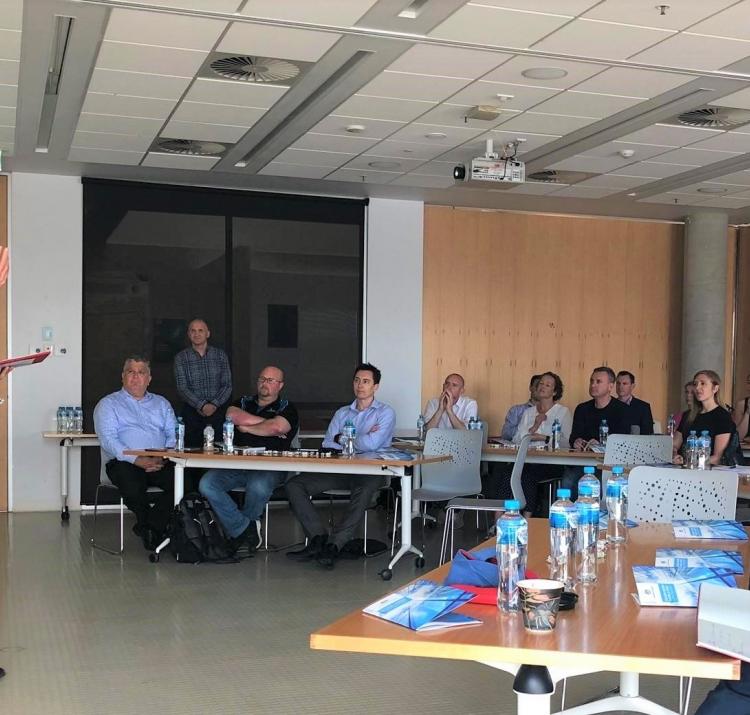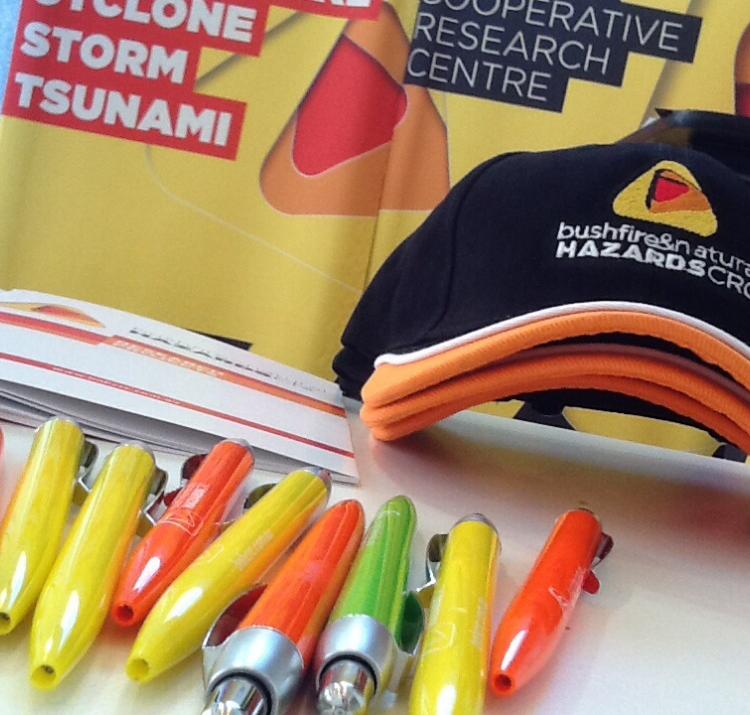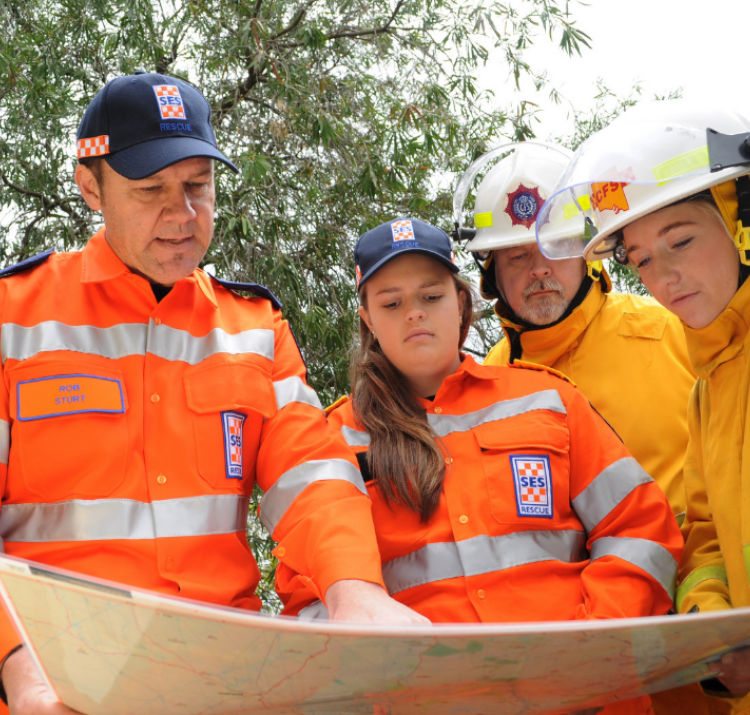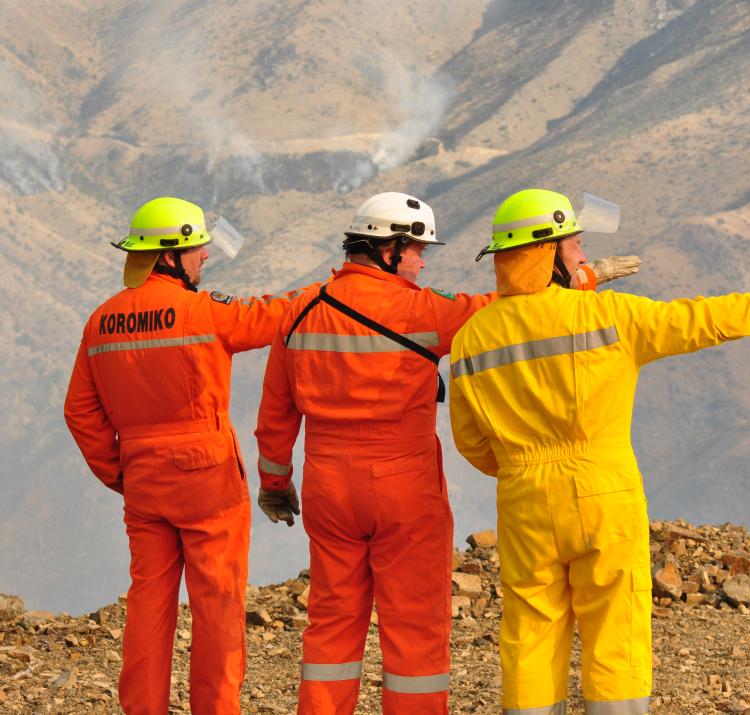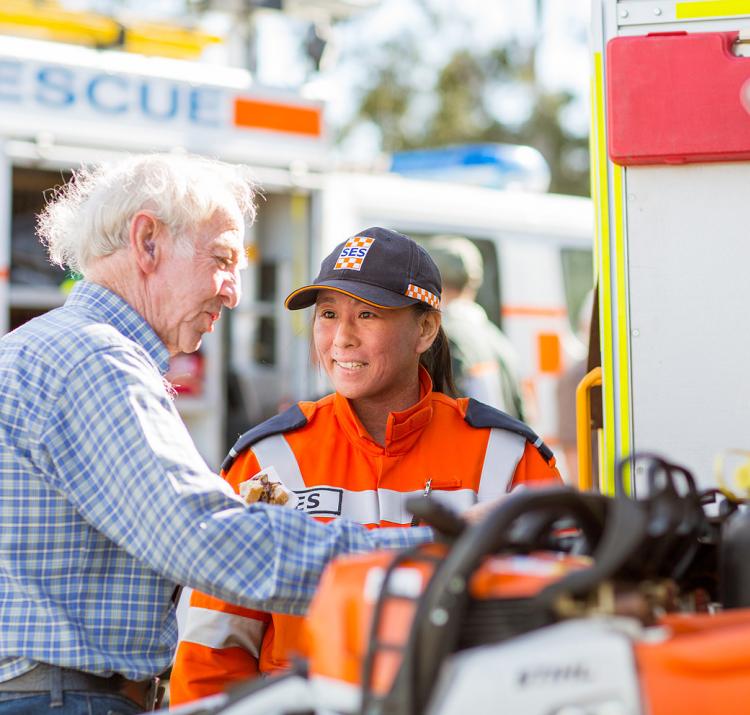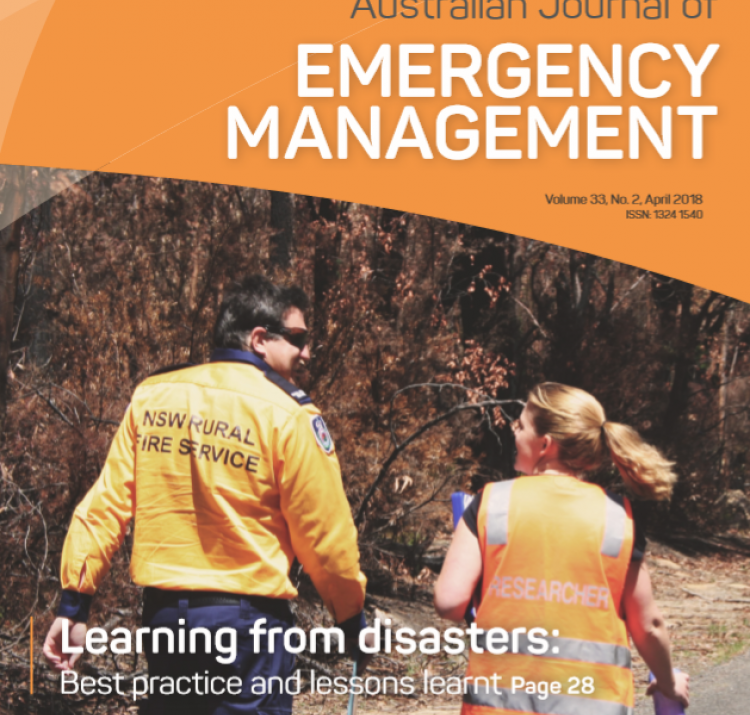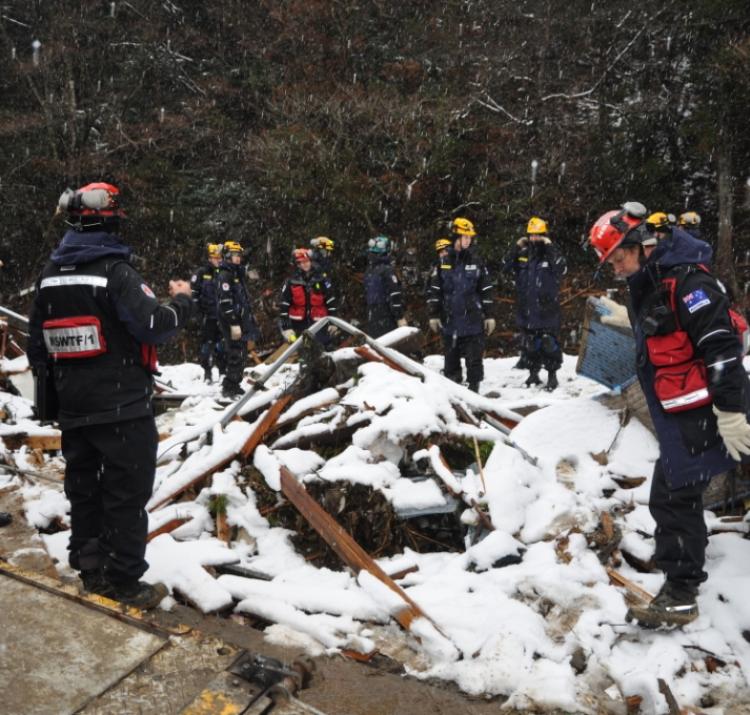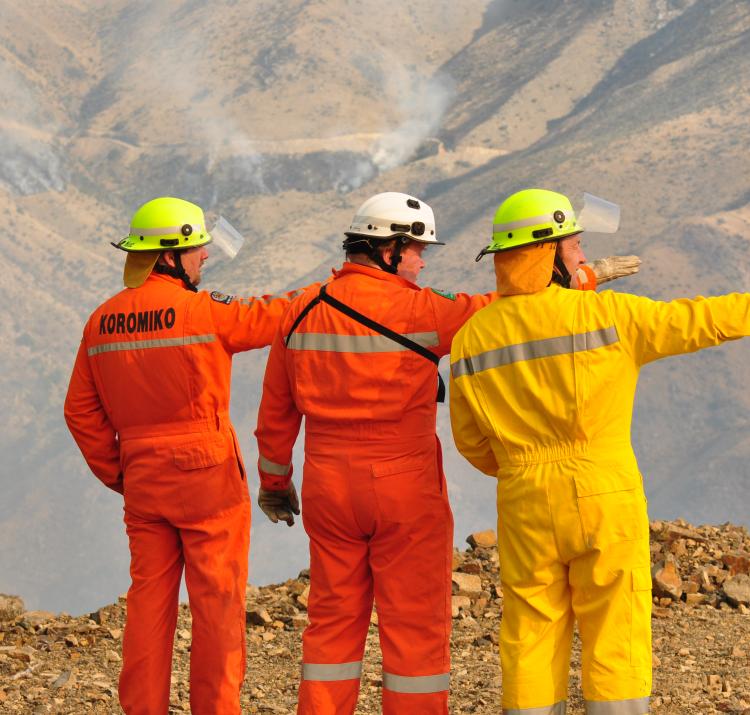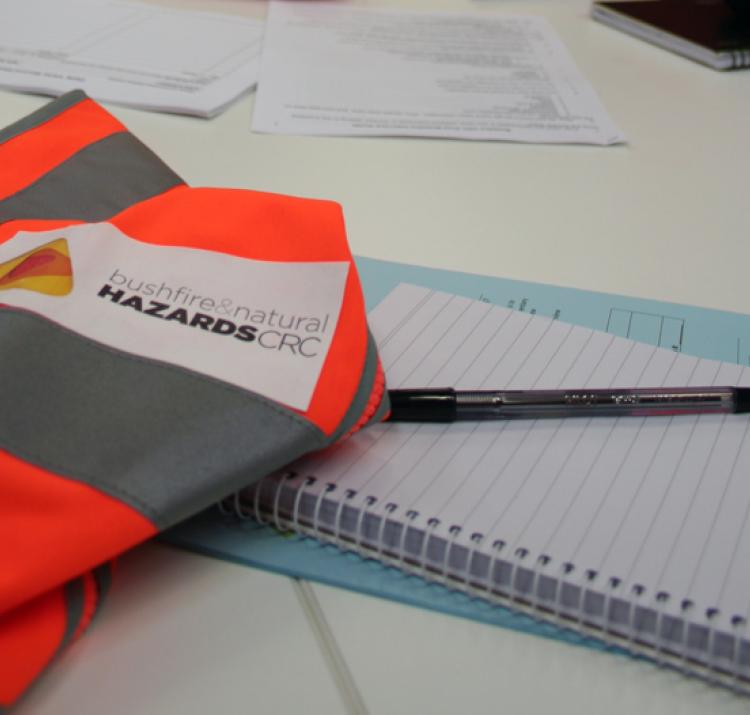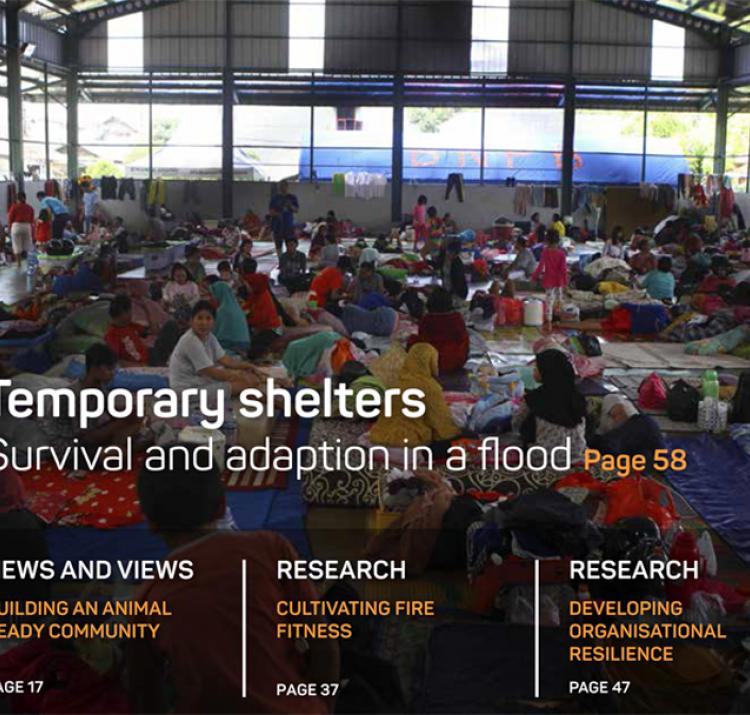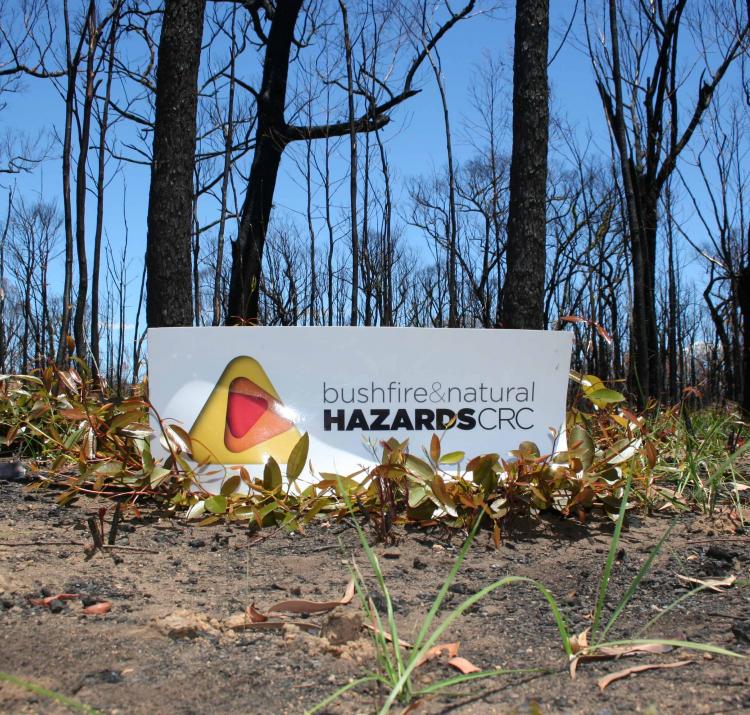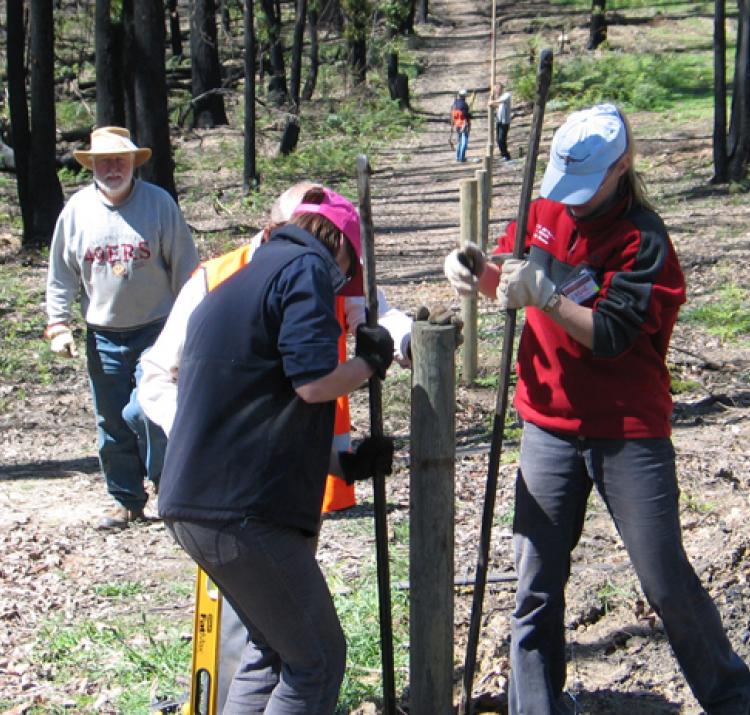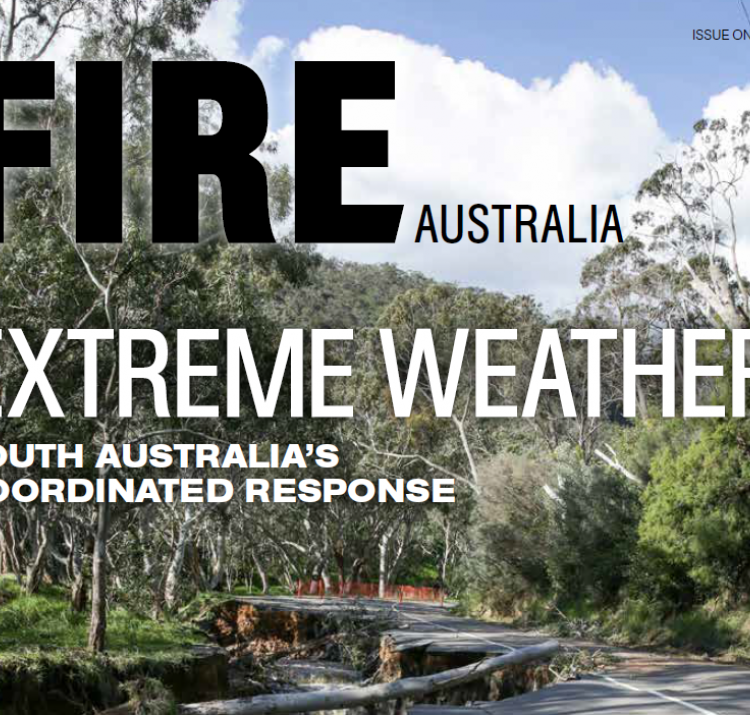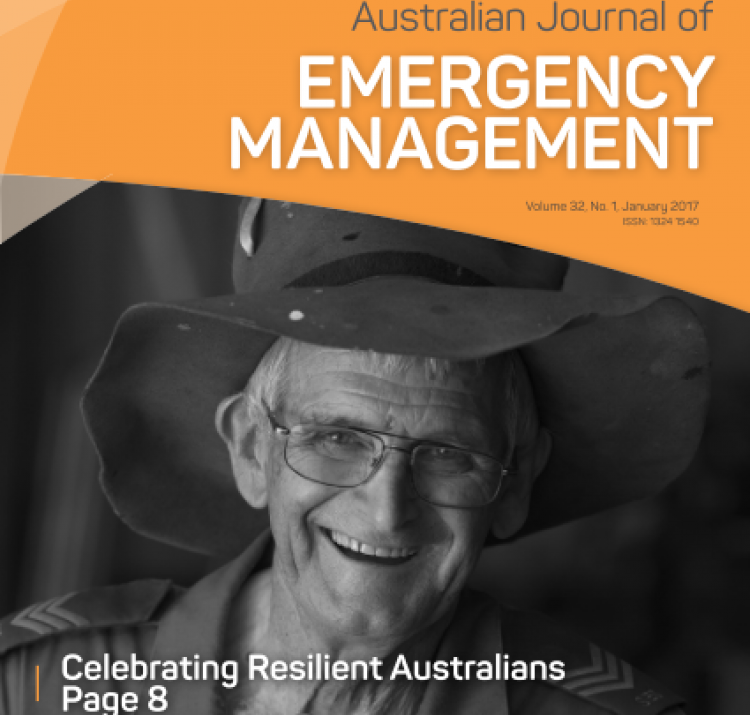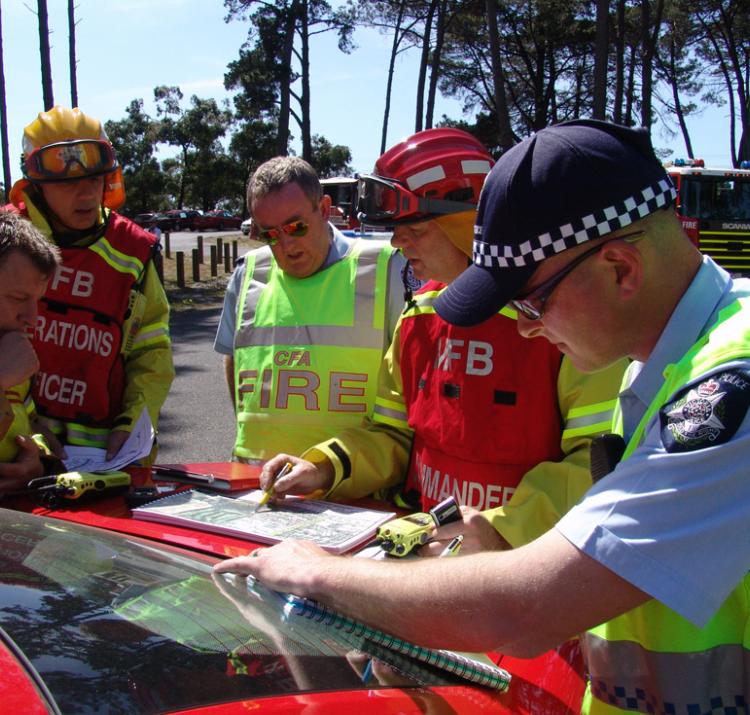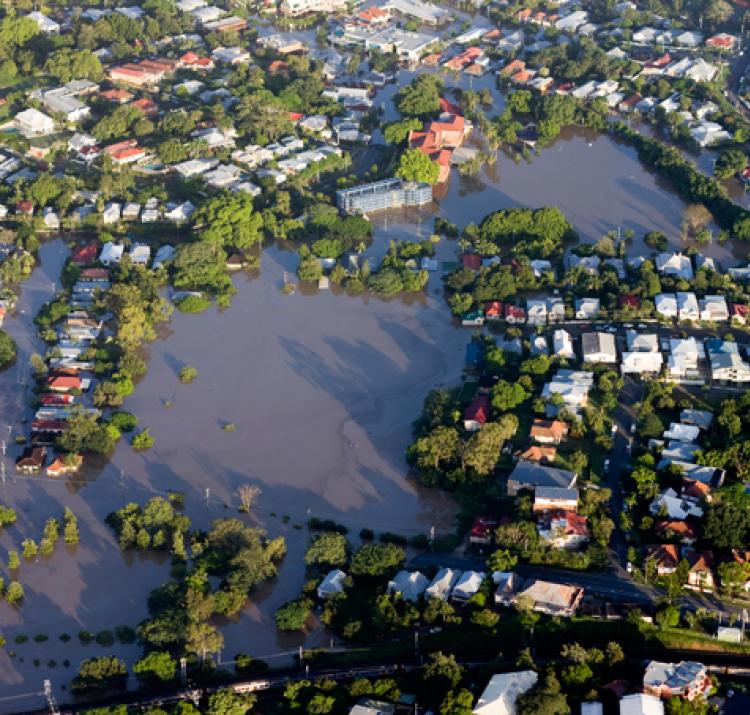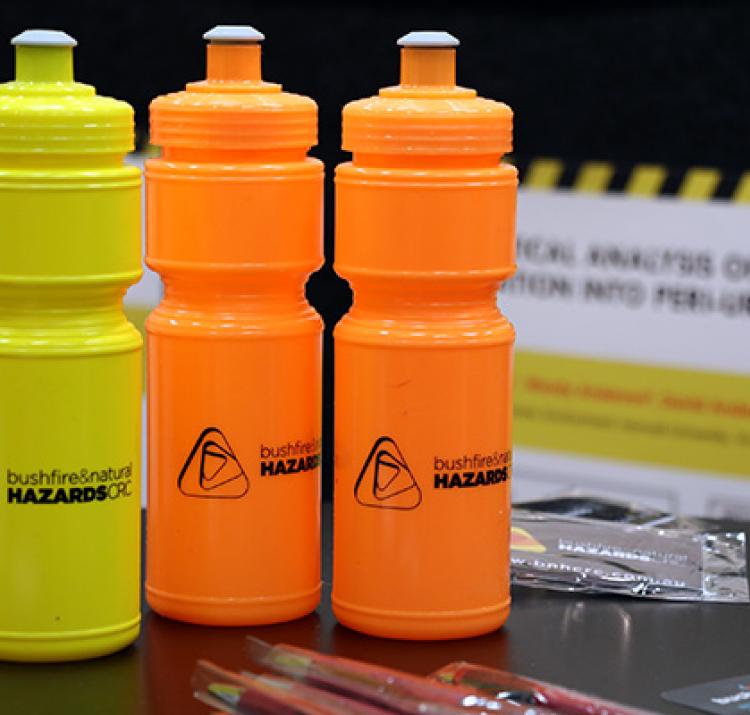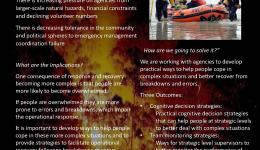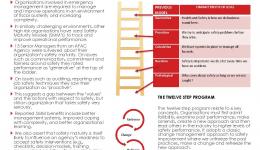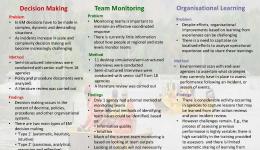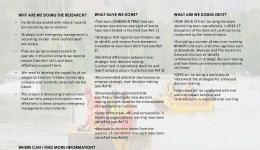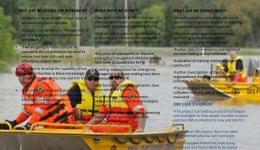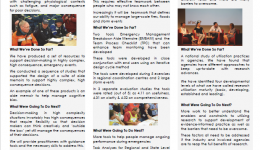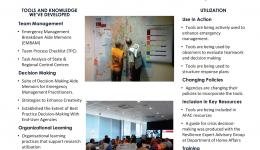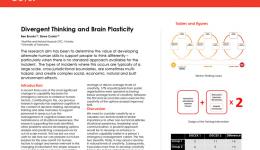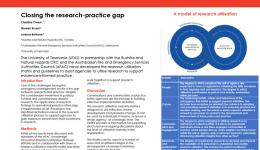|
2022 |
Book |
Hayes, P., Bearman, C. & Gyles, D. A guide to non-technical skills in emergency management. 58 (Bushfire and Natural Hazards CRC, 2022). |
|
2021 |
Report |
Bearman, C. & Hayes, P. Embedding non-technical skills as part of core business in emergency management - Final project report Part A. (Bushfire and Natural Hazards CRC, 2021). |
|
2020 |
Journal Article |
Bearman, C., Butler, P. & Owen, C. Non‐technical skills for emergency incident management teams: A literature review. Journal of Contingencies and Crisis Management (2020). doi:https://doi.org/10.1111/1468-5973.12341 |
|
2020 |
Journal Article |
Owen, C., Krusel, N. & Bethune, L. Implementing research to support disaster risk reduction. Australian Journal of Emergency Management 35, 54-61 (2020). |
|
2020 |
Journal Article |
Curnin, S., Brooks, B. & Owen, C. A case study of disaster decision‐making in the presence of anomalies and absence of recognition. Journal of Contingencies and Crisis Management (2020). doi:https://doi.org/10.1111/1468-5973.12290 |
|
2020 |
Journal Article |
Hayes, P., Bearman, C., Thomason, M. & Bremner, P. A. Staying on task: a tool to help state and regional-level emergency management teams. Australian Journal of Emergency Management 35, 38-44 (2020). |
|
2020 |
Journal Article |
Brooks, B. & Curnin, S. Stretch‐Thinking Loops: A New Technique for Scenario Planning. Risk, Hazards & Crisis in Public Policy (2020). doi:https://doi.org/10.1002/rhc3.12205 |
|
2020 |
Report |
Brooks, B. & Curnin, S. Utilisation funding: South Australia stretch thinking project. (Bushfire and Natural Hazards CRC, 2020). |
|
2020 |
Report |
Bearman, C., Brooks, B., Owen, C. & Curnin, S. Using the human centred design method to develop tools for non-technical skills in emergency management. (Bushfire & Natural Hazards CRC, 2020). |
|
2020 |
Report |
Bearman, C. et al. Decision making, team monitoring & organisational learning in emergency management annual report 2018-2019. (Bushfire and Natural Hazards CRC, 2020). |
|
2020 |
Report |
Brooks, B. & Curnin, S. Follow up of study participants: brain plasticity and divergent thinking. (Bushfire and Natural Hazards CRC, 2020). |
|
2020 |
Report |
Bearman, C. et al. Improving decision making, teamwork and organisational learning in emergency management – final project report. (Bushfire and Natural Hazards CRC, 2020). |
|
2019 |
Conference Paper |
Hayes, P., Karanasios, S., Cooper, V. & Poblet, M. Joining the dots: using social media to connect with more vulnerable Victorians during emergencies. Bushfire and Natural Hazards CRC Research Day AFAC19 (2019). at <https://knowledge.aidr.org.au/resources/australian-journal-of-emergency-management-monograph-series/> |
|
2019 |
Journal Article |
Curnin, S. & O'Hara, D. Nonprofit and public sector interorganizational collaboration in disaster recovery: Lessons from the field. Nonprofit Management & Leadership 30, 277-297 (2019). |
|
2019 |
Journal Article |
Brooks, B., Curnin, S., Owen, C. & Boldeman, J. New human capabilities in emergency and crisis management: From non-technical skills to creativity. Australian Journal of Emergency Management 34, (2019). |
|
2019 |
Journal Article |
Brooks, B., Curnin, S., Owen, C. & Bearman, C. Managing cognitive biases during disaster response: the development of an aide memoire. Cognition, Technology & Work 1-13 (2019). doi:https://doi.org/10.1007/s10111-019-00564-5 |
|
2019 |
Report |
Brooks, B. & Curnin, S. Evaluation of pre-intervention data: divergent thinking and brain plasticity. (Bushfire and Natural Hazards CRC, 2019). |
|
2018 |
Journal Article |
Curnin, S. Collaboration in disasters: A cultural challenge for the utilities sector. Utilities Policy 54, (2018). |
|
2018 |
Journal Article |
Owen, C., Hayes, P., Brooks, B., Scott, C. & Conway, G. Evidence to support incident management team capability. Australian Journal of Emergency Management 33, 5 (2018). |
|
2018 |
Journal Article |
Owen, C., Brooks, B., Curnin, S. & Bearman, C. Enhancing learning in emergency services organisational work. Australian Journal of Public Administration (2018). doi:https://doi.org/10.1111/1467-8500.12309 |
|
2018 |
Journal Article |
Owen, C. How emergency services organisations can – and do – utilise research. Australian Journal of Emergency Management 33, (2018). |
|
2018 |
Journal Article |
Brooks, B., Curnin, S., Bearman, C. & Owen, C. Human error during the multilevel responses to three Australian bushfire disasters. Journal of Contingencies and Crisis Management 26, (2018). |
|
2018 |
Journal Article |
Bearman, C., Rainbird, S., Brooks, B., Owen, C. & Curnin, S. A literature review of methods for providing enhanced operational oversight of teams in emergency management. International Journal of Emergency Management 14, (2018). |
|
2018 |
Journal Article |
Owen, C., Hayes, P., Brooks, B., Scott, C. & Conway, G. Identifying the evidence to support incident management team capability. Australian Journal of Emergency Management 33, 44-49 (2018). |
|
2018 |
Report |
Bearman, C., Brooks, B., Owen, C., Curnin, S. & Stuart, H. Decision making, team monitoring and organisational learning in emergency management: annual project report 2017-18. (Bushfire and Natural Hazards CRC, 2018). |
|
2018 |
Report |
Owen, C. Opportunities and constraints identified in existing frameworks in use for organisational learning. (Bushfire and Natural Hazards CRC, 2018). |
|
2017 |
Conference Paper |
Rumsewicz, M. Research proceedings from the 2017 Bushfire and Natural Hazards CRC and AFAC Conference. Bushfire and Natural Hazards CRC & AFAC annual conference 2017 (Bushfire and Natural Hazards CRC, 2017). |
|
2017 |
Conference Paper |
Bearman, C., Rainbird, S., Owen, C., Brooks, B. & Curnin, S. Enhancing team performance. AFAC17 (Bushfire and Natural Hazards CRC, 2017). |
|
2017 |
Conference Paper |
Brooks, B., Curnin, S., Bearman, C. & Owen, C. Identifying lessons from exercising and training for emergency management decision-making. AFAC17 (Bushfire and Natural Hazards CRC, 2017). |
|
2017 |
Journal Article |
Bearman, C., Grunwald, J., Brooks, B. & Owen, C. Tools for monitoring teams in emergency management: EMBAM and TBM. Australian Journal of Emergency Management 32, (2017). |
|
2017 |
Journal Article |
Owen, C., Krusel, N., Bearman, C. & Brooks, B. From research outcome to agency change: mapping a learning trajectory of opportunities and challenges. Australian Journal of Emergency Management 32, (2017). |
|
2017 |
Journal Article |
Grunwald, J. & Bearman, C. Identifying and resolving coordinated decision making breakdowns in emergency management. International Journal of Emergency Management 13, (2017). |
|
2017 |
Report |
Bearman, C. et al. Decision making, team monitoring and organisational learning in emergency management: annual project report 2016-17. (Bushfire and Natural Hazards CRC, 2017). |
|
2016 |
Journal Article |
Bearman, C. & Bremner, P. A. Don't just do something, stand there! Mitigating goal seduction in emergency management. National Emergency Response 29, 12-17 (2016). |
|
2016 |
Journal Article |
Bosomworth, K., Owen, C. & Curnin, S. Addressing challenges for future strategic-level emergency management: reframing, networking and capacity building. Disasters 41, 306-323 (2016). |
|
2016 |
Journal Article |
Brooks, B., Curnin, S., Bearman, C., Owen, C. & Rainbird, S. An assessment of the opportunities to improve strategic decision-making in emergency and disaster management. Australian Journal of Emergency Management (2016). at <https://knowledge.aidr.org.au/resources/ajem-oct-2016-an-assessment-of-the-opportunities-to-improve-strategic-decision-making-in-emergency-and-disaster-management/> |
|
2016 |
Journal Article |
Owen, C., Brooks, B., Bearman, C. & Curnin, S. Values and complexities in assessing strategic-level emergency management effectiveness. Journal of Contingencies and Crisis Management 24, 181-190 (2016). |
|
2016 |
Report |
Bearman, C. et al. Decision making, team monitoring and organisational learning in emergency management: Annual project report 2015-2016. (Bushfire and Natural Hazards CRC, 2016). |
|
2016 |
Report |
Bearman, C., Rainbird, S., Brooks, B. & Owen, C. Proposed tools for monitoring teams in emergency management. (Bushfire and Natural Hazards CRC, 2016). |
|
2015 |
Conference Paper |
Owen, C., Brooks, B. & Bearman, C. Challenges of Measuring Emergency Management Performance Under Adversity: The Good, The Bad, The Ugly Conference Paper 2014. Bushfire and Natural Hazards CRC and AFAC Wellington Conference 2014 (2015). |
|
2015 |
Journal Article |
Bearman, C., Grunwald, J., Brooks, B. & Owen, C. Breakdowns in coordinated decision making at and above the incident management team level: An analysis of three large scale Australian wildfires. Applied Ergonomics 47, 16-25 (2015). |
|
2015 |
Journal Article |
Owen, C., Scott, C., Adams, R. & Parsons, D. Leadership in crisis: developing beyond command and control. Australian Journal of Emergency Management 30, (2015). |
|
2015 |
Journal Article |
Bhandari, R., Owen, C. & Trist, C. Incident Management Approaches above the Incident Management Team Level in Australia. Journal of Homeland Security and Emergency Management 12, 101-119 (2015). |
|
2015 |
Report |
Bearman, C. et al. Practical decision tools for improved decision-making in complex, time-constrained and multi-team environments: Annual project report 2014-2015. (Bushfire and Natural Hazards CRC, 2015). |
|
2015 |
Report |
Owen, C. Decision making, team monitoring and organisational performance: Part four organisational performance research stream. (Bushfire and Natural Hazards CRC, 2015). |
|
2015 |
Report |
Bearman, C., Brooks, B. & Owen, C. Practical Decision Tools for Improved Decision-Making in Complex Situations Annual Report 2014. (2015). |
|
2015 |
Report |
Bearman, C. Decision making, team monitoring and organisational performance: Part three team performance monitoring research stream. (Bushfire and Natural Hazards CRC, 2015). |
|
2015 |
Report |
Brooks, B. & Curnin, S. Decision making, team monitoring and organisational performance: Part two decision making research stream. (Bushfire and Natural Hazards CRC, 2015). |
|
2015 |
Report |
Bearman, C. et al. Decision making, team monitoring and organisational performance: Part One Executive Summary. (Bushfire and Natural Hazards CRC, 2015). |

